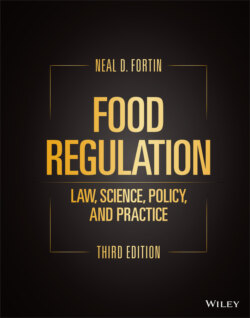Читать книгу Food Regulation - Neal D. Fortin - Страница 102
3.3.2 Labeling Versus Food Advertising
ОглавлениеAdvertising is any commercial solicitation and anything published or transmitted to attract customers or sell a product. The definition of “labeling” is broad enough that it overlaps with advertising. For example, brochures, flyers, and booklets that accompany a food fall under the scope of “labeling.”
Before 1938, no federal agency was directly charged with the regulation of food advertising. The federal regulation of advertising began with passage of the Federal Trade Commission Act in 1914, which created the FTC, but at that time false advertising was only prohibited when there was evidence of injury to a competitor.
In the years leading to passage of the FD&C Act, Congress debated which agency should have jurisdiction over food advertising. The issue was decided with the passage of the Wheeler‐Lea Amendment of 1938,5 which designated the FTC as the agency to regulate the advertising of food. The Wheeler‐Lea Amendment amended section 5 of the FTC Act and empowered the FTC to act against unfair or deceptive acts or practices if there was evidence of injury to the public. Proof of injury to competition was no longer necessary. At the time, delegation of authority over advertising to FTC, rather than FDA, was considered a victory for the regulated industries.6
Nonetheless, FDA also has authority over advertising when it is also “labeling.” This creates overlapping authority on some advertising. The labeling requirements tend to be more proscriptive than the advertising requirements. Some statements permitted in advertising may be prohibited on labeling. This situation has resulted in considerable attention to the meaning and limits of term “labeling.”
